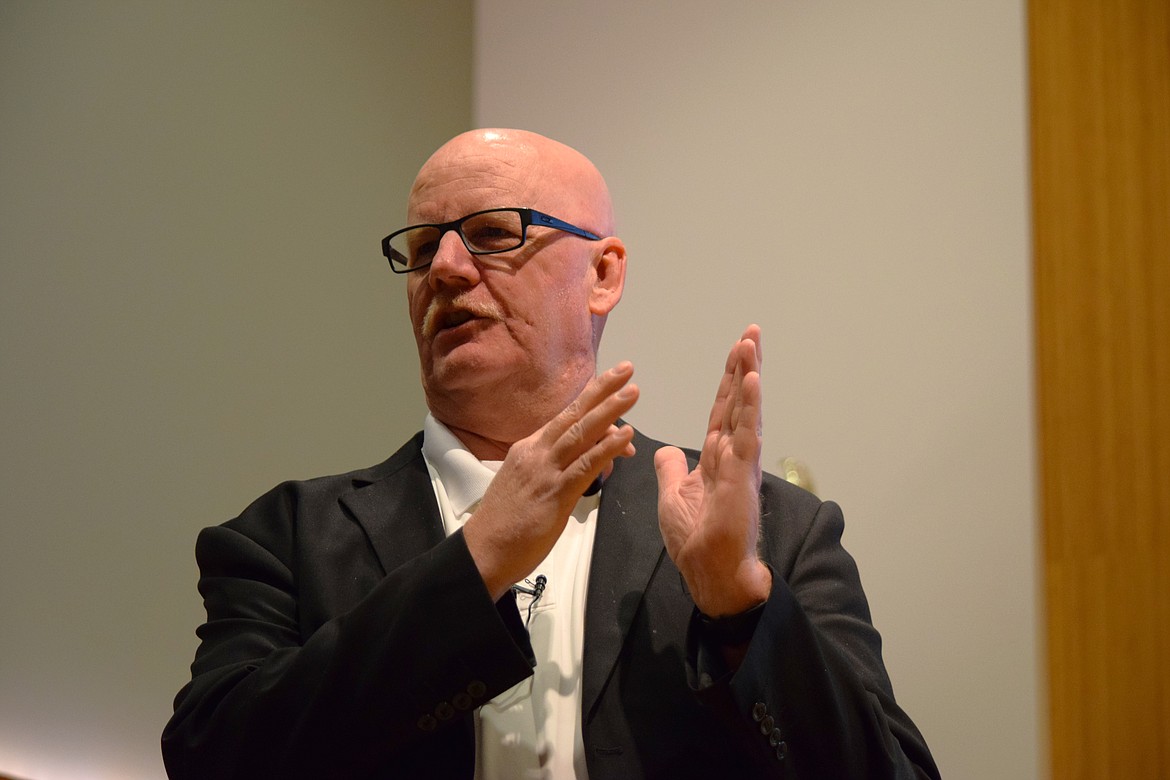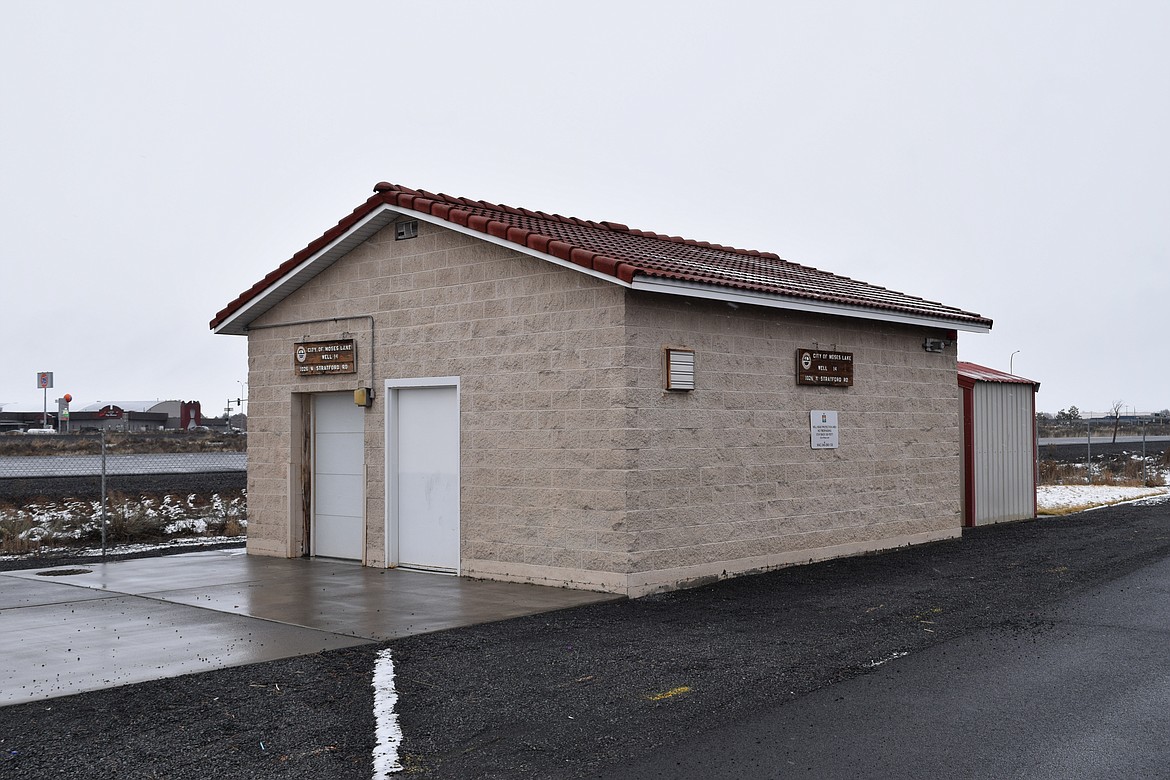‘The very concerned zone’
MOSES LAKE — It’s Moses Lake Municipal Services Director Kirk Holmes’ job to make sure that everyone in Moses Lake has enough water to drink.
Making sure that goal is maintained over the next few years, especially as the city grows and the deep aquifers that provide much of its water slowly decline will take a lot of work.
“I’m not sure that we’ve entered crisis zone quite yet with your water supply,” Holmes said during a presentation in the Moses Lake Civic Center Auditorium last week. “I would say that we are in the concerned zone – in the significantly concerned zone.”
Holmes, who came to Moses Lake roughly a year ago, spoke on Thursday as part of the Moses Lake Museum & Art Center’s “Save Water, Save Moses Lake” speaker series, and gave an overview of the water dilemmas facing the city and his belief that the situation can be dealt with, even that will require time, work and money.
“What I really want to make sure that you understand is that there are solutions,” he said. “You might be sitting there thinking, what’s the problem? We’re surrounded by water. Yeah, we are. But a wise person that works for the city of Moses Lake always reminds me that legal access to water is not uncomplicated.”
“It’s very difficult. It’s very challenging. And that’s where we’re at,” he said.
Depletion of the deep aquifer under the Columbia Basin is not unique to Eastern Washington, Holmes said. Rather, the overuse of groundwater is a problem across the West, from the great plains that sit above the giant Ogallala Aquifer to California’s Central Valley — all of which have been declining as human use, for drinking and for farmland irrigation, has increased since the middle decades of the 20th century.
However, Holmes said the problem underneath the Basin has its own unique features given the way the Columbia Basin Project was sold to prospective settlers looking for irrigated land to farm.
“The whole Grant County area was marketed as a land of milk and honey. Come here, great farmland, lots of water,” he said.
The failure to build the East High Canal and finish the Columbia Basin Project prompted the state of Washington to issue, beginning in the 1960s, what it believed were temporary groundwater permits for irrigation. As more people drilled wells and pumped, Holmes said the level of the deep aquifer dropped, forcing irrigators and cities reliant upon that aquifer, to drill deeper, sometimes down 2,000 feet, where the water gets hot, the quality declines significantly and the amount of energy needed to pump water and maintain adequate pressure increases significantly.
“The deeper we go, the more challenges we have,” he said.
The deepwater aquifers — 1,000 feet down or deeper — are 10,000-12,000 years old, and do not recharge easily or quickly, Holmes said. Currently, the city of Moses Lake has 18 wells drilled into those aquifers. However, pumping rates on six of them are throttled back to ensure they continue pumping water as opposed to air.
Holmes said the city is looking at shallower wells — water pumped from wells less than 300 feet deep — but in the northern part of town, groundwater contamination leftover from the former Larson Air Force Base means that water may not be easily usable. Currently, the U.S. Environmental Protection Agency monitors wells around the former base and is engaged in cleaning up chemicals widely used in the 1950s to clean aircraft that filtered down to the water table.
In other places, that shallow water is fine but needs to have some metals like manganese, nitrates and phosphorus filtered out in order to be acceptable for use as drinking water.
“We have some pesky compounding problems,” he said.
Among the solutions the city is looking at is using water from Moses Lake, as well as treated wastewater, to irrigate lawns and parks, Holmes said. The city is also examining changes to zoning codes that would encourage the planting of less water-intensive lawns and landscaping plants. Holmes said city staff has identified 33 sites — mostly city parks — that could either be irrigated with lake water or relandscaped with more drought-resistant plants.
“The areas we’re looking at, maybe a new landscape type,” he said. “We’re really close to sort of moving forward on a project right now to eliminate all turn grass and go to more of a heritage-type gardening area and use it as a showcase for people to come and see it.”
“I mean, we can make things look nice without having a bunch of turf grass,” Holmes added.
Holmes said he talks about the water situation frequently to civic groups, noting that his goal is not to scare people, but rather make them aware of a situation that needs to be addressed and prompt them to support city officials as they seek to solve the problem.
“This is a real deal. It’s a real issue that we need to address,” he said. “There’s no reason we can’t solve this problem. It’s a little scary, we’ve got some issues identified, we’re moving forward.”
Charles H. Featherstone can be reached at cfeatherstone@columbiabasinherald.com.





